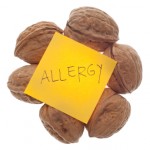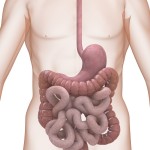I've been reading about food allergies recently beginning with a Wall Street Journal article entitled "An 'Allergy Girl' Comes Out of Her Bubble." Sandra Beasley, author of that short piece, is in her early thirties, has major food allergies and has written a memoir, Don't Kill the Birthday Girl: Tales fom an Allergic Life.
I found two medical websites dealing with the issue, one from the Mayo Clinic. and the other on MedicineNet.com. We have to sort out food allergy from food intolerance, which is considerably more prevalent. I have mild food intolerance to milk and dairy products, presumably from a low level of the enzyme, lactase, which helps break down the lactose in those foods, but can drink a small glass of milk without any problems resulting. I have a relative who has fairly severe lactose intolerance and strictly avoids milk; if he drinks even a small glass, he's going to, at the very least, have lots of gas.
We have a local friend who is allergic to a protein in milk; she'll have bloody diarrhea if she drinks any quantity of it. She can drink coconut milk and, when she joins us at our favorite Thai restaurant, will order Thai ice tea with that substitution.
Mayo's website says the FDA requires food producers to provide a list of the big eight, the most common ingredients that cause around 80% of food allergies. The list includes milk, eggs, peanuts, so-called "tree nuts," including almonds, walnuts and cashews, fish including bass, cod and flounder, shellfish (e.g., crab, shrimp and lobster), soy and wheat.
Fresh meat, fresh produce and some oils don't require labeling, but packaged foods do. That holds true even when the allegen is in a flavoring, coloring or other ingredient. The manufacturers are required to list even small amounts of the allergens if and only if, they're actually contained in an ingredient.
But there's another issue or two or three. Some food allergens can be introduced via cross contamination, so many food producers will add statements like, "Manufactured in a factory that also processes peanuts." This is voluntary on the part of the food company and the FDA is working to make the format of these warning labels more consistent.
But the article from "allergy girl" describes an episode where she asked for a dairy-free menu in a restaurant, then ordered a drink. The cocktail came with a milky liquid bottom layer. Upon inquiry she found the garnish contained pine nuts.
The waiter said, "You didn't ask for the nut-free menu."
In her case, as in the situation for many adults with major food allergies, multiple foods can cause life-threatening reactions.
We ask friends who are coming to our house for a meal what food intolerances and food allergies they have and plan accordingly. But two years ago, one man was about to reach for a dish that had a pine nut topping when his wife grabbed his hand.
"Did you forget to mention the last time you ate pine nuts, we had to visit the emergency room? she asked.
I was happy I had an Epi-pen in the nearby bathroom.






